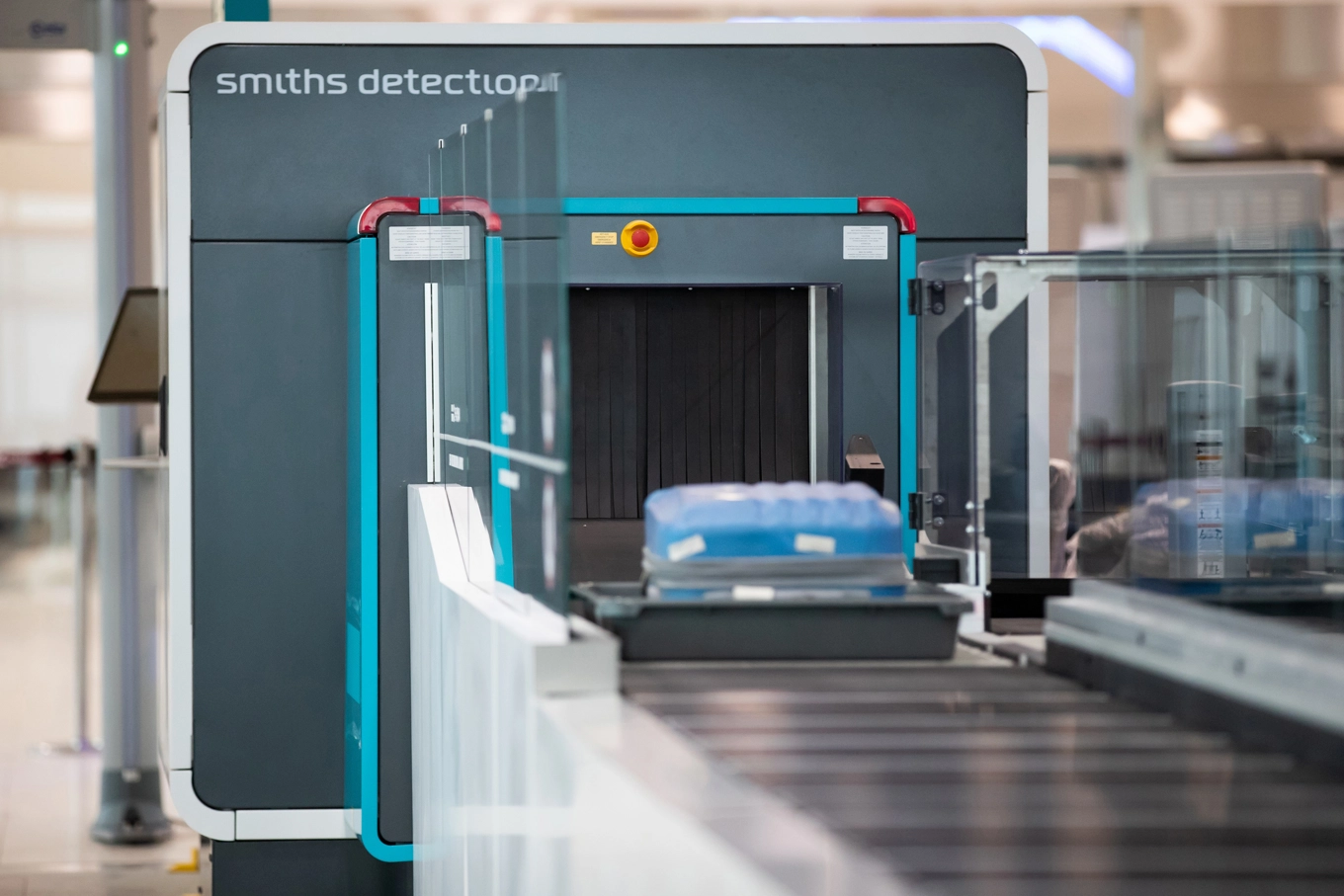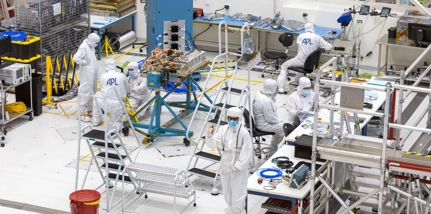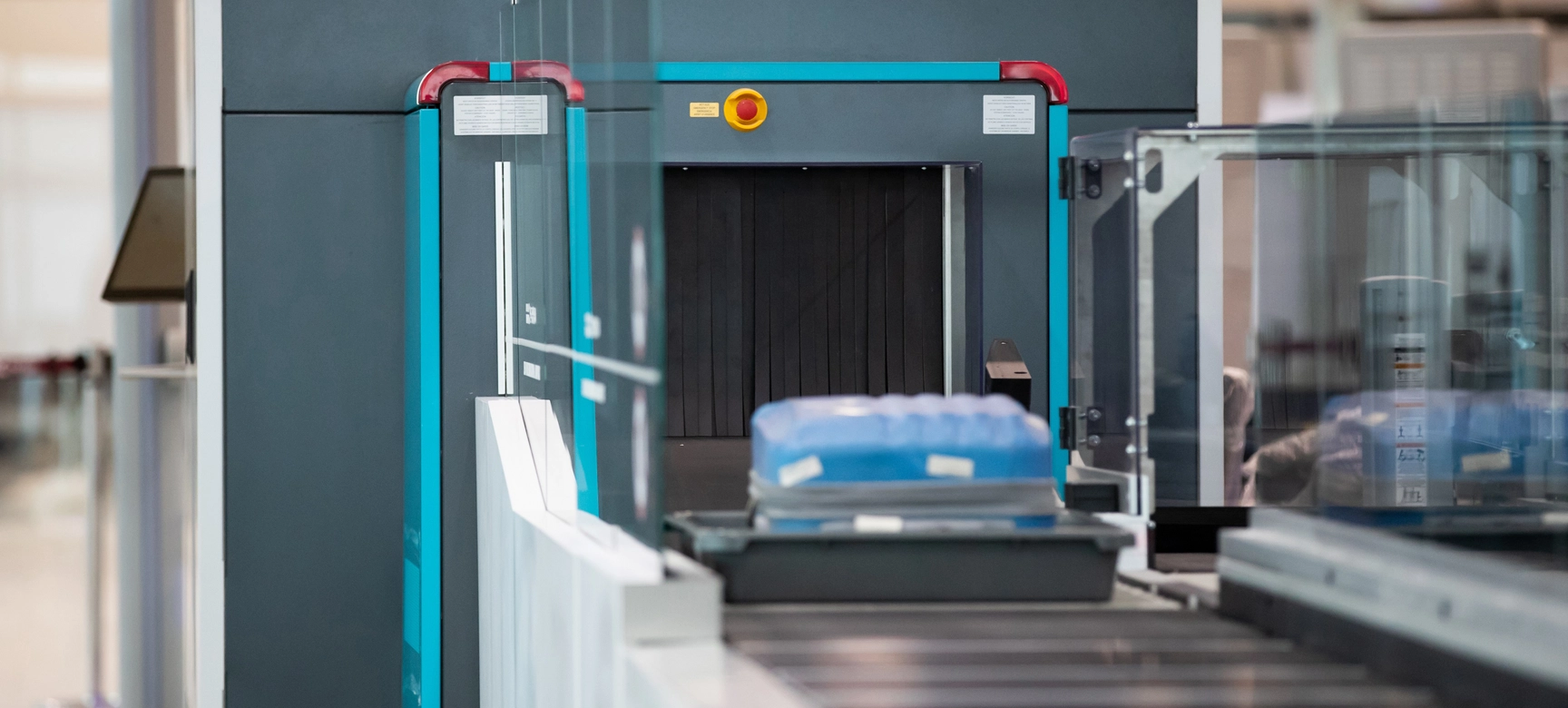
30 October 2023
Good news for travellers as new detection technology eliminates need to remove liquids and laptops from bags.
6.3 billion passengers. 103 million metric tonnes of freight. On some 68 million flights. From 1,200 airports, according to the latest ACI data.
Air travel is bouncing back to pre-pandemic levels.
According to Airports Council International, international passengers are returning in ever greater numbers, and a full recovery is widely anticipated in the near future. And, given that passenger numbers have increased threefold over the past three decades despite significant dips caused by 9/11 and COVID, further industry growth is expected to follow.
But with the return of air traffic comes the resurgence of security threats – many of which have evolved to allow transportation in ever smaller, lighter and more difficult to detect forms.
The good news is that airport checkpoint screening systems are evolving too. Until recently, most airport checkpoint screening systems have been using 2D imaging technology which is restricted to scanning up to four images per bag – which limits the view of bag contents especially if hidden by denser items such as a laptop.
This resulted in airports tightening security regulations requiring passengers to adopt the now-familiar carry-on screening procedures of limiting liquids to 100ml and unpacking electrical devices and liquids for separate screening – often resulting in longer queues and wait times.
However now, airports around the world are steadily introducing the next generation of screening systems - 3D Computed Tomography (CT) X-ray – which provides a 360-degree view of luggage contents, helping to overcome many of the limitations of the 2D systems.
This technology is a game changer for the airports who have re-emerged from the pandemic into a fiercely competitive market. Airports are seeking to stand out from the field by cutting those queues. The ultimate goal is to provide a superior passenger experience as well as operational efficiency whilst – crucially - maintaining the highest level of security.
What you may not have known is that the next generation technology has been around for some time already. However, the first systems were too large for passenger areas at airports and were therefore confined to hold luggage screening. Now, thanks to advances in technology which have reduced system size, the full power of CT screening can be unleashed, to deliver on all those fronts, with transformational passenger checkpoint solutions - such as Smiths Detection’s world leading HI-SCAN 6040 CTiX.
With 1,000 systems already sold, its advanced X-ray imager moves quickly to produce 720 images from 360 degrees around each tray, clearly capturing the details of even paper-thin, liquid or well-hidden hazardous items. These are collated into a high quality, 3D image which operators can rotate, slice and enhance and, with the help of a simple and intuitive user interface and highly advanced threat detection algorithms, assess more accurately and quickly.
Significantly for the passenger this means that, where jurisdictions permit, they no longer need to remove liquids, gels and electronic devices. Plus, faster belt speeds and more rapid operator examination means the average checkpoint process for travellers is up to a third faster. This means more time to enjoy the airport experience ahead of your trip.
For the airport operator, this all adds up to improved productivity and operational costs, reduced queues and the option to repurpose airport space for a more appealing passenger experience, all while improving their rigorous security standards.
And, with that, the future of air travel looks set to soar.

The technical spec: HI-SCAN 6040 CTiX
Bringing Computed Tomography (CT) technology to the checkpoint, the HI-SCAN 6040 CTiX scanner delivers increased throughput, lower operating costs than competitive systems and the highest standard of security (ECAC and STAC EDS CB C3 approval, as well as TSA APSS 6.2 Level 1 certification.)
Its superior quality 3D X-ray images provide very precise data. Along with sophisticated threat detection algorithms, automatic object recognition and explosives detection, and an innovative interface that won the Red Dot design award, this helps operators to make fast and accurate decisions.
Significantly, it eliminates the need for passengers to remove electronic devices, liquids and gels from hand luggage before screening. Along with the highest belt speed in its class (0.2m/s), this expedites the process for each passenger, shortens queues and reduces the number of trays required.
The system is considerably smaller and lighter than its predecessors, making it attractive for airports with space constraints.
Compared to alternative systems, it is quiet (60 dB) and has zero vibration, helping to maintain a more pleasant checkpoint environment; it has a 5-20% lower power consumption, and, by generating less heat, it is also less demanding on the security area’s cooling systems.
It’s been specifically designed to be easily integrated into existing checkpoints to minimise capital outlay and upgrade costs. Plus, its performance can be enhanced yet further by integrating with an advanced screening and management platform like Checkpoint.Evoplus or automated object recognition software iCMORE for detecting an increasing range of prohibited items such as guns and knives.
Related insights

Cool thinking solves hot climate challenge
Read our latest #EngineeringExplained exploring the Earth-critical revolution of Heating, Ventilation and Air Conditioning
Find out more

Searching for E.T.
Read our latest Engineering Explained insight on Smiths Interconnect's role in NASA’s Europa Clipper - to search for life on the fourth largest of Jupiter’s 95 moons.
Find out more

Integrating a sustainable ethos into our products
Find out more





